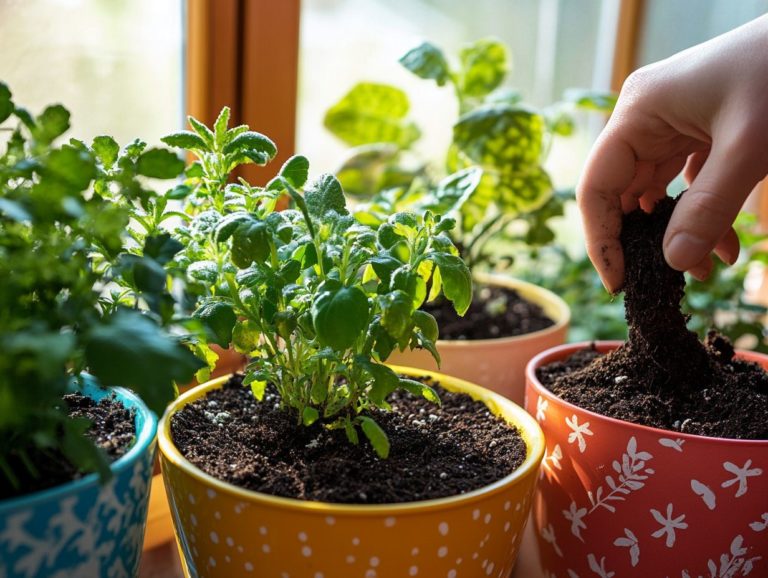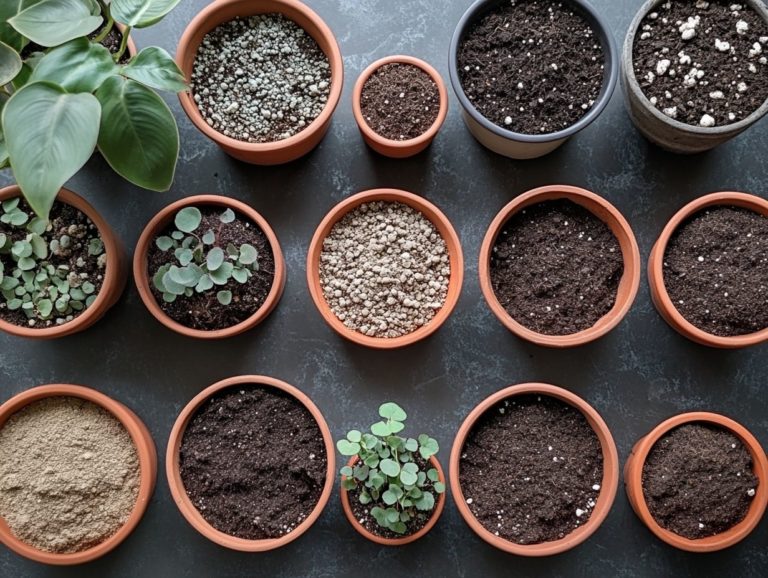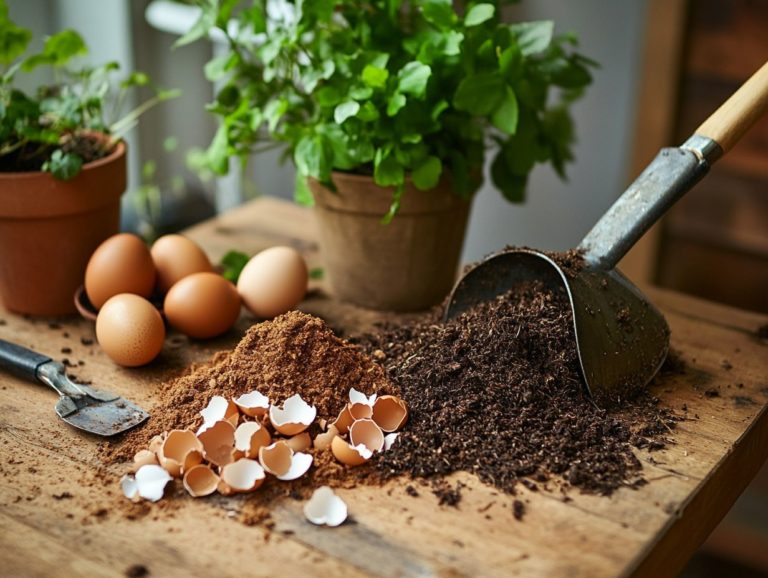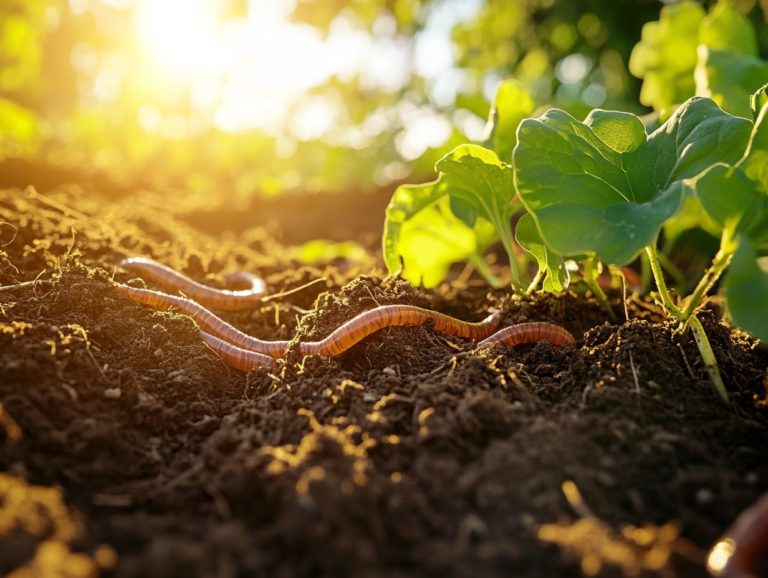How Often to Fertilize Indoor Plants
Fertilizing your indoor plants is essential for maintaining their health and vibrancy. Just as humans require essential nutrients, your plants thrive on the right balance of fertilizers tailored to their specific needs.
With numerous factors to consider such as plant type, soil quality, and environmental conditions figuring out when and how to apply fertilizer can feel overwhelming. This guide shows you why fertilizing is a game-changer for your indoor plants!
Discover how to establish an optimal fertilizer routine that caters to your plants and elevates your indoor garden to new heights!
Contents
Key Takeaways:
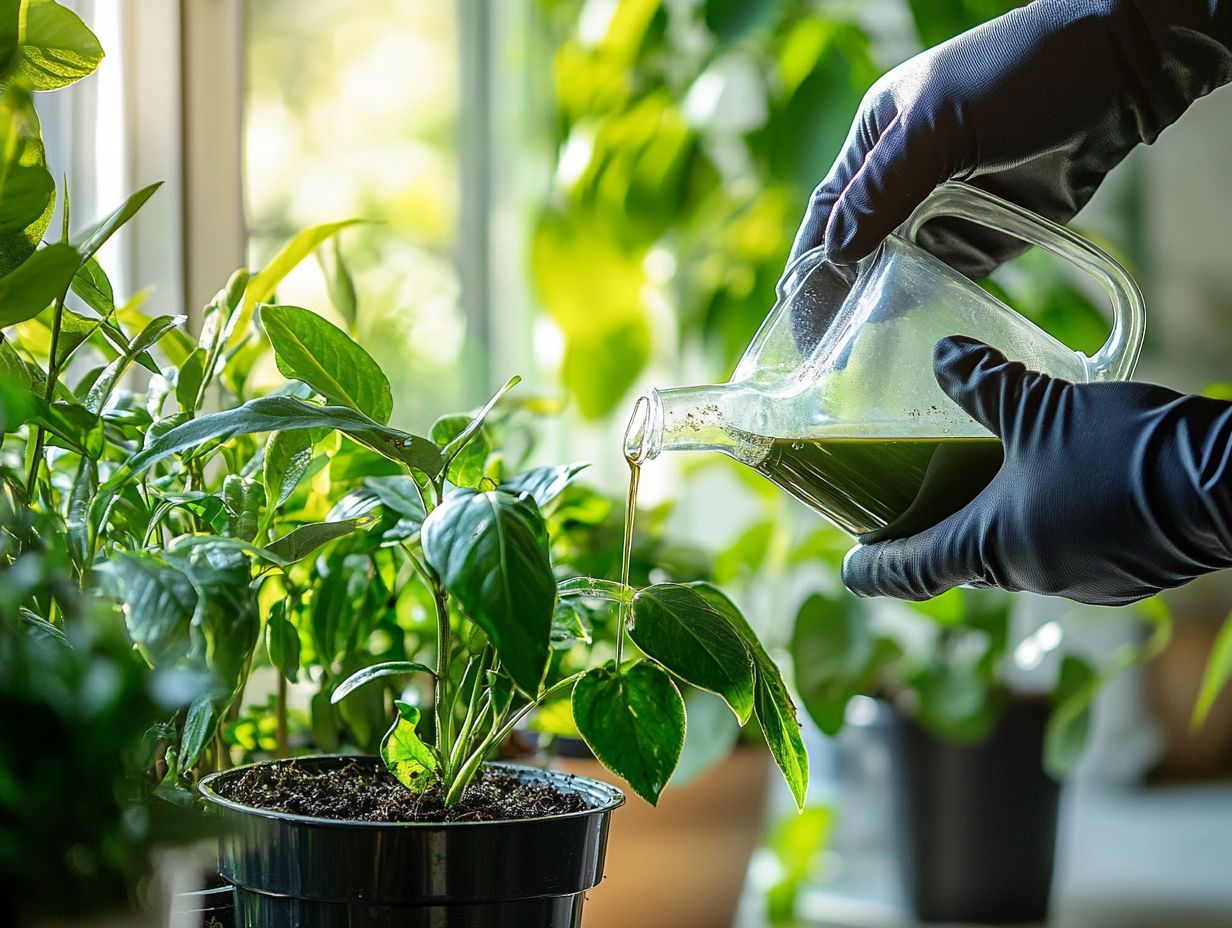
- Indoor plants should be fertilized regularly to ensure their health and growth.
- Consider factors such as plant type, soil quality, and environmental conditions when determining how often to fertilize.
- Choosing the right type of fertilizer and following proper fertilization techniques can prevent over-fertilization and keep your plants thriving.
The Importance of Fertilizing Indoor Plants
Fertilizing your indoor plants is crucial for their healthy growth and vitality. It supplies the essential nutrients they require to thrive in an indoor setting, including nitrogen, phosphorus, and potassium.
Without proper fertilization, your plants may experience nutrient deficiencies, weakening their growth and making them more vulnerable to pests and diseases.
Experts like Madeline Buiano, Justin Hancock, and Patrick Hillman highlight the importance of establishing a consistent fertilizer routine. Establishing this routine boosts the overall health of your houseplants and elevates the vibrancy of your indoor space.
Why Fertilizing is Necessary
Fertilizing your houseplants is essential for providing them with the vital nutrients they need to grow healthily and fend off pests and diseases.
These key nutrients include nitrogen, which promotes lush leaf growth; phosphorus, which energizes root development; and potassium, which strengthens plant growth overall. A balanced fertilization schedule, including how to fertilize your indoor plants effectively, can enhance your houseplants’ ability to thrive, helping to prevent common issues like pests and disease while encouraging vibrant foliage.
Don t wait! Regular feeding is essential, as it supports efficient nutrient uptake, leading to robust plants that can tackle various challenges. By incorporating homemade fertilizer and other organic options, you can improve soil structure and microbial health, creating a thriving ecosystem that nurtures long-term growth and vitality.
Factors to Consider Before Fertilizing
Before you fertilize your indoor plants, it’s essential to evaluate several key factors. Consider the type of plant you have, the composition of the soil, and the specific environmental conditions your plants are in, as these will affect their fertilization needs.
These elements play a significant role in determining the nutrient needs and growth requirements of your greenery.
Type of Plant and Soil
The type of plant you choose and its soil composition are pivotal in determining the essential nutrients required for optimal growth.
Each houseplant has its own unique set of needs, thriving under specific conditions that directly influence its health and vibrancy. For example, flowering plants benefit from higher levels of phosphorus to encourage beautiful blooms, while leafy specimens often flourish in nitrogen-rich soil.
The soil type whether sandy, clay, or loamy plays a substantial role in how effectively nutrients are retained and made available to the plant roots. By conducting soil tests, you can gain invaluable insights into the composition and pH levels of your soil.
This knowledge allows you to make the necessary amendments, leading to more effective fertilization outcomes and ultimately resulting in healthier, more vibrant plants.
Environmental Conditions
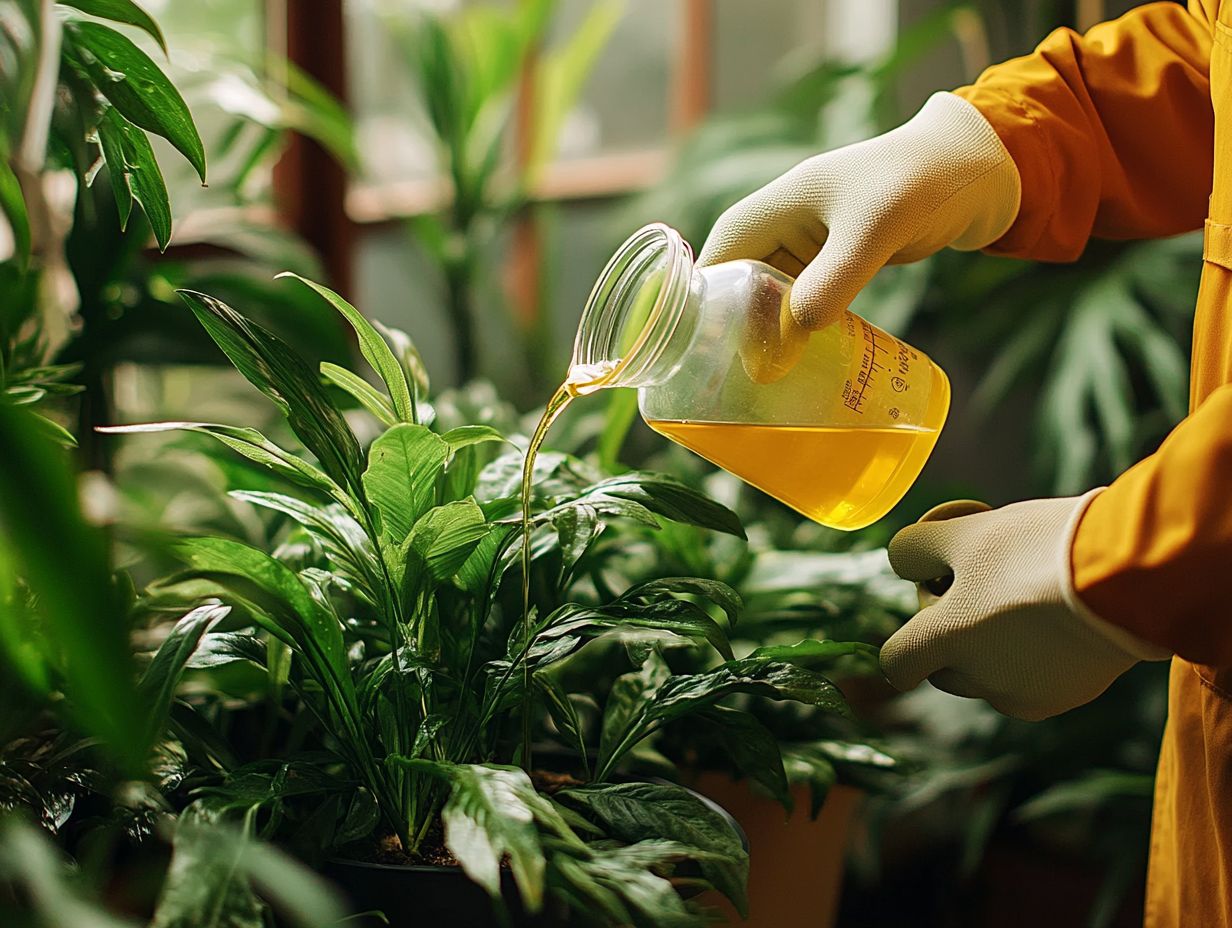
Environmental conditions, such as light, humidity, and temperature, play a crucial role in the health of your indoor plants and their fertilization needs.
These elements influence the speed of growth and the efficiency of nutrient absorption. They also affect the plants’ resistance to pests and diseases. For example, if temperatures rise and light levels increase, you may notice your plants growing at a rapid pace. This means they ll need more frequent fertilization to satisfy their heightened nutrient requirements.
During cooler months, when growth tends to slow down, you may find it beneficial to adjust your fertilization schedule.
Your indoor plants will often thrive best with a balanced nutrient solution tailored to their current growth phase. By keeping an eye on the leaves for any signs of nutrient deficiency and responding promptly, you can act now to cultivate a vibrant and flourishing indoor garden that will impress everyone!
When to Fertilize Indoor Plants
Knowing when to fertilize is key to keeping your indoor plants thriving! This timing typically corresponds with their growing season. It’s essential to develop specific fertilization routines tailored to each plant type and its unique care requirements.
Frequency and Timing
The frequency and timing of fertilizing your houseplants depend on their growth stage and the type of fertilizer you choose. You should adapt your practices accordingly.
To establish an effective fertilization schedule, consider the specific growing season of your plants. Many flourish during spring and summer when they’re actively growing, requiring more frequent applications of liquid fertilizer or slow-release fertilizer. Increasing the frequency of fertilization during this peak growth period can be particularly beneficial, especially with balanced fertilizers that promote foliage and root development. Additionally, understanding watering frequency is crucial for optimal care.
Keep a close eye on your plant’s health, as it can reveal vital clues. For example, yellowing leaves or stunted growth may signal that it’s time for some adjustments. Tailoring your fertilization frequency while being mindful of environmental conditions will help ensure your garden thrives beautifully.
Types of Fertilizers for Indoor Plants
Selecting the ideal fertilizer for your indoor plants is crucial for fostering their growth and vitality. You have an array of choices at your disposal, from organic and synthetic fertilizers to homemade concoctions and a variety of commercial products, including both water-soluble and slow-release options.
Each type of fertilizer offers unique benefits that can significantly enhance the well-being of your cherished greenery.
Organic vs. Synthetic Fertilizers
Understanding the distinctions between organic and synthetic fertilizers is essential for making environmentally conscious choices that resonate with your plant care philosophy.
By evaluating these options, you can discern how each type nourishes your plants and affects the broader ecosystem. Organic fertilizers, typically derived from natural materials like compost and manure, promote a sustainable approach, enhancing soil health while minimizing the risk of chemical runoff.
On the other hand, synthetic fertilizers often deliver immediate nutrient availability, resulting in quick growth spurts. However, they can lead to nutrient leaching, which occurs when nutrients wash away from the soil, making them unavailable to plants, and soil degradation over time.
Therefore, it s crucial to weigh the immediate benefits against the long-term implications for both plant vitality and environmental safety.
Choosing the Right Fertilizer for Your Plants
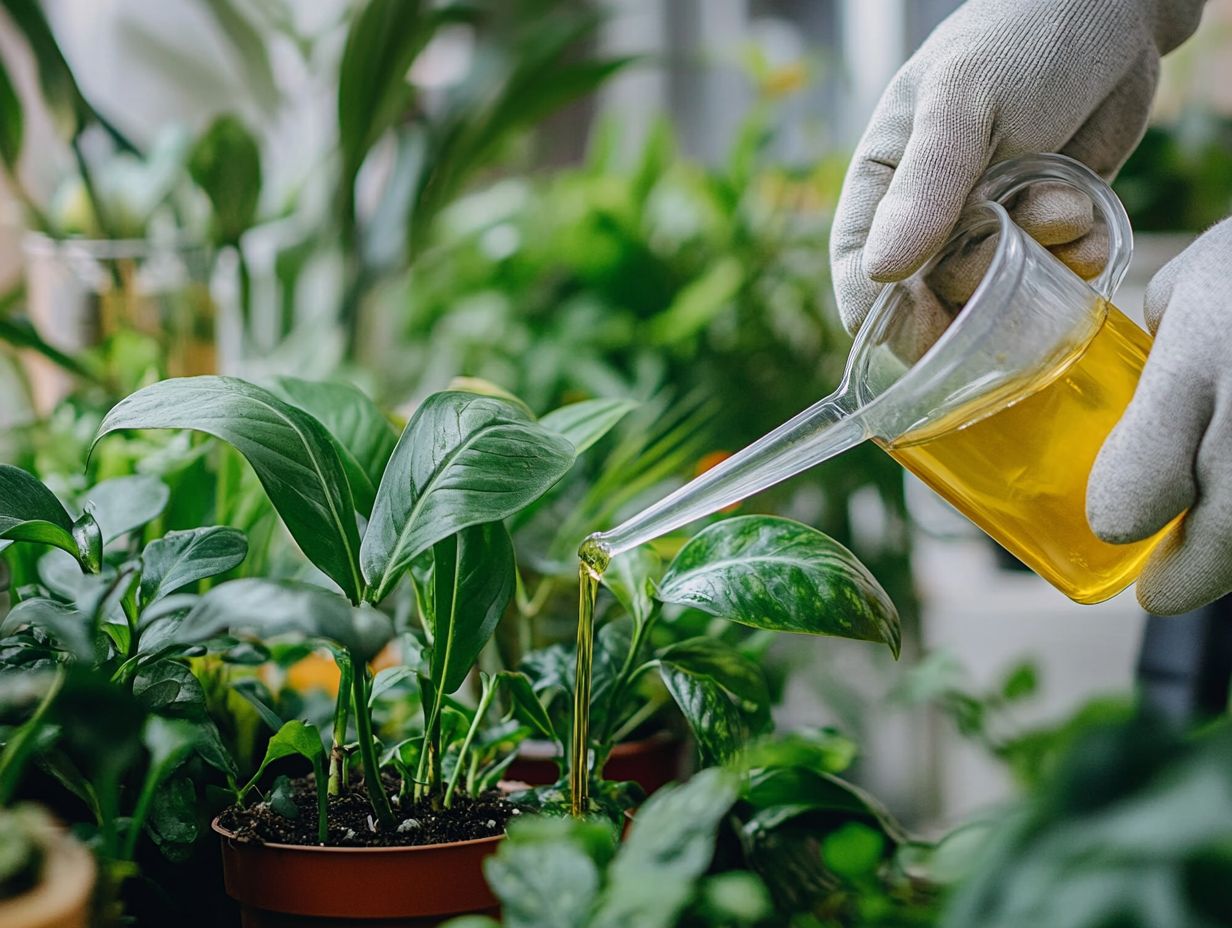
Choosing the right fertilizer for your houseplants requires a keen understanding of their specific nutrient needs, which can vary significantly based on species, seasonal growth, and their individual growth conditions.
Consider the life stage of each plant. A vibrant, growing specimen demands different nutrients than one that is resting or dormant.
Factors such as light exposure, humidity levels, and even pot size can greatly influence how much nourishment your plants truly require. By familiarizing yourself with these dynamics of plant care, you can ensure that your houseplants not only survive but thrive.
Dissecting fertilizer labels is crucial. Understanding NPK ratios nitrogen, phosphorus, and potassium helps you select the right fertilizer for your plant’s growth, unlocking their full potential.
How to Fertilize Indoor Plants
Fertilizing your indoor plants effectively follows a simple step-by-step guide. This ensures you apply the right nutrients in the correct quantities, promoting robust growth while avoiding common pitfalls like over-fertilizing.
With this method, your plants will thrive, showcasing their beauty and vitality.
Step-by-Step Guide
A step-by-step guide to applying fertilizer to your indoor plants ensures they receive the perfect amount of nutrients while sidestepping the risk of over-fertilizing or nutrient leaching.
-
Begin with preparation by selecting the right type of fertilizer tailored to your plants specific needs. Take into account their growth stage, the season, and the type of plant to determine which product will work best. Consider using homemade fertilizer or organic fertilizers as alternatives.
-
Once you ve made your choice, apply it methodically. You can either mix it with water for a liquid feed or sprinkle granules around the base for a granular option.
-
After fertilizing, follow-up care becomes essential. Keep a close watch on your plants for any signs of stress or nutrient burn, as this vigilance can prevent long-term damage.
-
Monitoring leaf color and growth patterns will provide clear insights into their health, enabling you to make any necessary adjustments without delay.
Signs of Over-Fertilization and How to Fix It
Recognizing the signs of over-fertilization in your houseplants is essential for preserving their vitality. Excessive nutrients can manifest as:
- Leaf burn
- Stunted growth
- Yellowing foliage
Being vigilant about these symptoms will ensure your plants thrive rather than struggle.
Identifying and Addressing Excess Fertilizer
Identifying excess fertilizer in your indoor plants is crucial for ensuring their healthy growth and preventing any further damage.
Pay attention to symptoms like leaf burn, stunted growth, or yellowing foliage; these can serve as early warning signs of an issue that needs addressing. Understanding how fertilizer salts can build up in the soil underscores the importance of regularly monitoring nutrient levels.
To counteract these negative effects, consider flushing the soil with clean water; this can effectively wash away excess salts, helping to restore a healthier balance. Adjust your fertilization routine to improve plant health by reducing both the frequency and concentration, which fosters optimal growth and stability for your plants, all while protecting their overall well-being.
Frequently Asked Questions
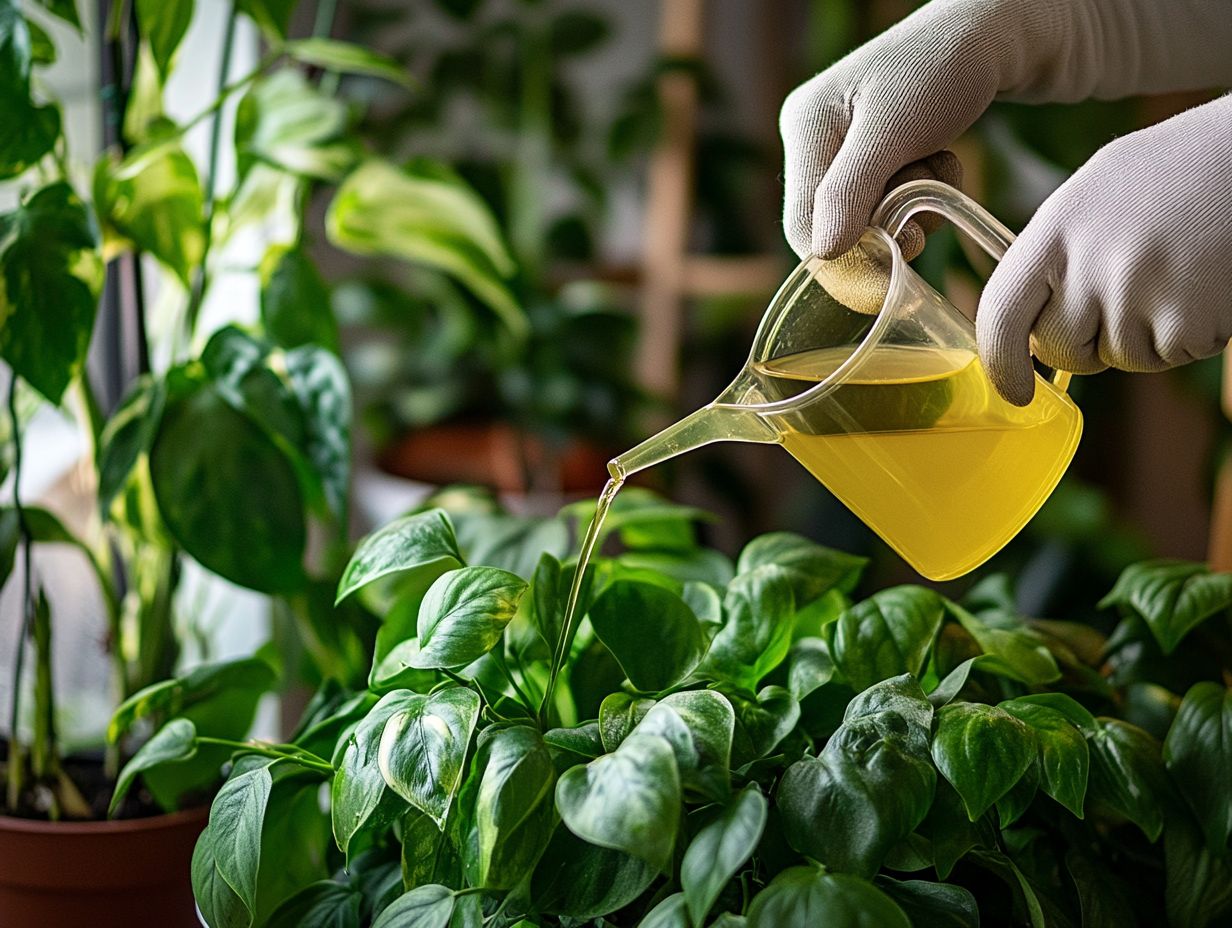
How often should I fertilize my indoor plants?
The frequency of fertilizing indoor plants depends on the specific type of plant and its growth rate. Generally, most indoor plants should be fertilized every 2-4 weeks during their active growing season.
Can I use the same fertilizer for all my indoor plants?
No, different plants have unique nutrient needs. Use a fertilizer made specifically for indoor plants to give them the best care.
What happens if I over-fertilize my indoor plants?
Over-fertilizing can cause salt to build up in the soil. This can damage roots and stunt growth, so always follow the recommended dosage on the label.
How do I know when it’s time to fertilize?
Look for signs like slow growth, yellowing leaves, or a general lack of energy. These indicate that your plant needs a nutrient boost.
Should I fertilize during the winter?
Winter growth is slower, so you don t need to fertilize as often. Consider fertilizing once every 6-8 weeks during this season.
Is over-fertilizing harmful?
Yes, it can be very harmful. Stick to the recommended amounts, as too many nutrients can burn roots and damage your plants.

